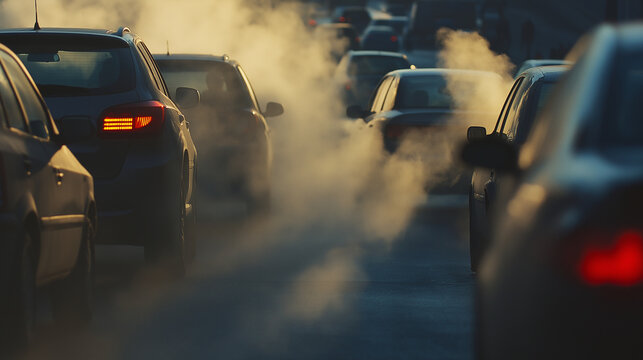
Pressure on the EU Automotive Sector Over New Emissions Standards
With just months remaining before the European Union’s stringent CO2 emissions regulations take effect, the automotive industry is ramping up calls for the European Commission to ease the rules. Under these new regulations, which come into force in 2025, carmakers must significantly reduce their vehicles’ average emissions, from 115.1 grams per kilometre to 93.6g. However, industry leaders are warning that the European market for electric vehicles (EVs) has not grown fast enough to meet these targets, leaving the sector on track for potentially billions of euros in fines.
The European People’s Party (EPP), the largest political group in the European Parliament, has intensified its demands for action, urging the Commission to provide “temporary relief measures.” These measures could include options such as allowing carmakers to “bank” their EV sales, which could be counted toward future compliance, or shifting to a three-year rolling average for emissions calculations rather than relying on single-year data. In addition, the EPP suggests that penalties should be based on vehicles actually produced, not just those sold, to give manufacturers more flexibility in their production strategies.
Calls for a “Technologically Neutral” Approach to Emission Reductions
The EPP’s position extends to the broader debate on the EU’s 2035 emissions target, which effectively bans the sale of new petrol and diesel vehicles. EPP lawmakers are advocating for a revision of this target, arguing for a “technologically neutral” approach that allows the continued use of alternative fuels such as biofuels, e-fuels, and renewable synthetic fuels. German lawmaker Jens Gieseke emphasized that these fuels could play a crucial role in reducing emissions while also supporting energy security and jobs in the European automotive sector.
However, critics argue that such fuels are less efficient than direct electrification, which is widely seen as the most effective long-term solution for reducing vehicle emissions. “Carbon-neutral fuels do not reduce tailpipe emissions,” said Vanessa Butani, Global Head of Sustainability at Volvo Cars, adding that Europe must prioritize electric vehicle development to stay competitive in the global market.
The EU’s Global Competitive Position at Risk
Despite strong public support for the electric vehicle transition, the European car industry has struggled to keep up with global competitors, particularly in the US and China. Lawmakers such as Gieseke downplay the issue of European industry lagging behind, stressing the need for regulatory frameworks that support the sector’s survival rather than relying on new subsidies or incentives.
Volvo’s position highlights the growing concern within the industry. The Swedish automaker, which withdrew from the European Association of Automobile Manufacturers (ACEA) in 2022, has consistently argued that direct electrification is the most efficient way forward. Butani stressed the importance of Europe moving quickly to develop and deploy electric vehicles. “Europe needs to remain relevant, and to do that we need to act fast,” she said, warning that delays in policy could worsen Europe’s competitiveness in the global race for electric vehicles.
Simplified Regulatory Framework for the Transition to EVs
The broader industry is also calling for a simplified regulatory framework to support the transition to electric vehicles. The European Association of Automobile Manufacturers (ACEA) has echoed similar concerns, pushing for fewer regulatory hurdles as the industry navigates the complex shift towards electrification. With the EU set to release a Clean Industrial Package in early 2024, and Commission President Ursula von der Leyen overseeing a new Strategic Dialogue on the future of Europe’s car industry, the pressure to address these concerns is mounting.
Key Industry Challenges and Potential Solutions:
1.Emissions Reductions: The Challenge of Compliance
- The EU’s new emissions targets for 2025 represent a significant hurdle for carmakers, with strict CO2 limits coming into effect.
- The lack of rapid growth in the EV market has left manufacturers scrambling to meet the targets, potentially leading to costly fines.
2. Calls for Temporary Relief Measures
- The EPP is advocating for flexible compliance measures, including allowing carmakers to “bank” EV sales and use rolling three-year averages to calculate emissions.
- Penalties could be based on vehicles produced rather than sold, offering manufacturers more breathing room.
3. Debate Over Technological Neutrality and Alternative Fuels
- The EPP supports the continued use of alternative fuels like e-fuels, biofuels, and synthetic fuels, arguing they can play a role in achieving CO2 reductions.
- Critics, however, point out that direct electrification remains the most efficient and sustainable solution for cutting emissions from the transport sector.
4. Global Competitiveness and Regulatory Support
- European automakers are falling behind US and Chinese firms in the race for electric vehicles, despite substantial public support.
- Industry leaders like Volvo stress the need for faster action and a regulatory framework that prioritizes electrification over alternative fuels.
5. Simplifying Regulatory Approaches to Boost EV Transition
- Industry groups are urging the EU to streamline regulations, helping manufacturers meet the challenges of transitioning to electric vehicles while maintaining their global competitiveness.











Leave a Reply
You must be logged in to post a comment.